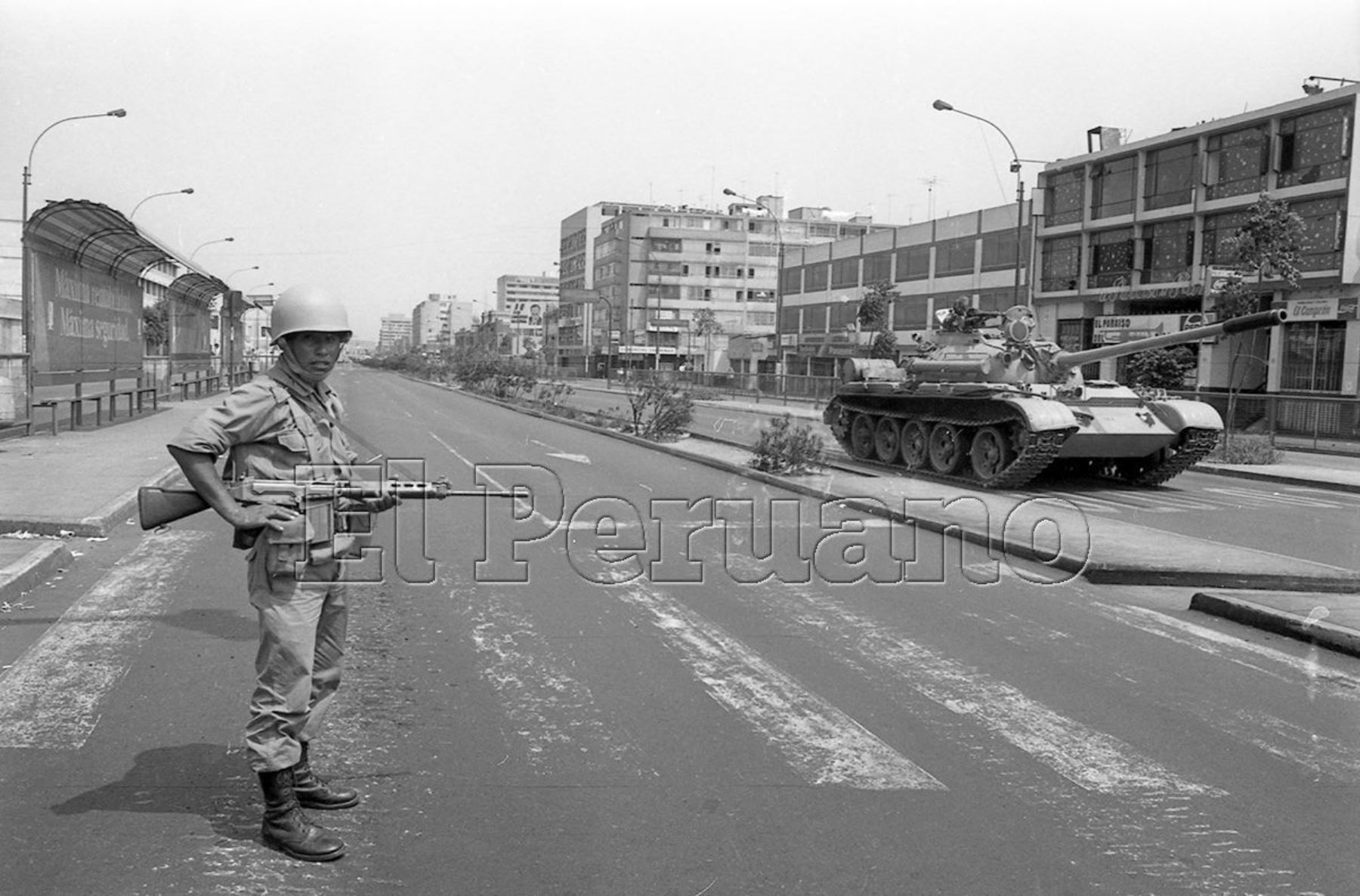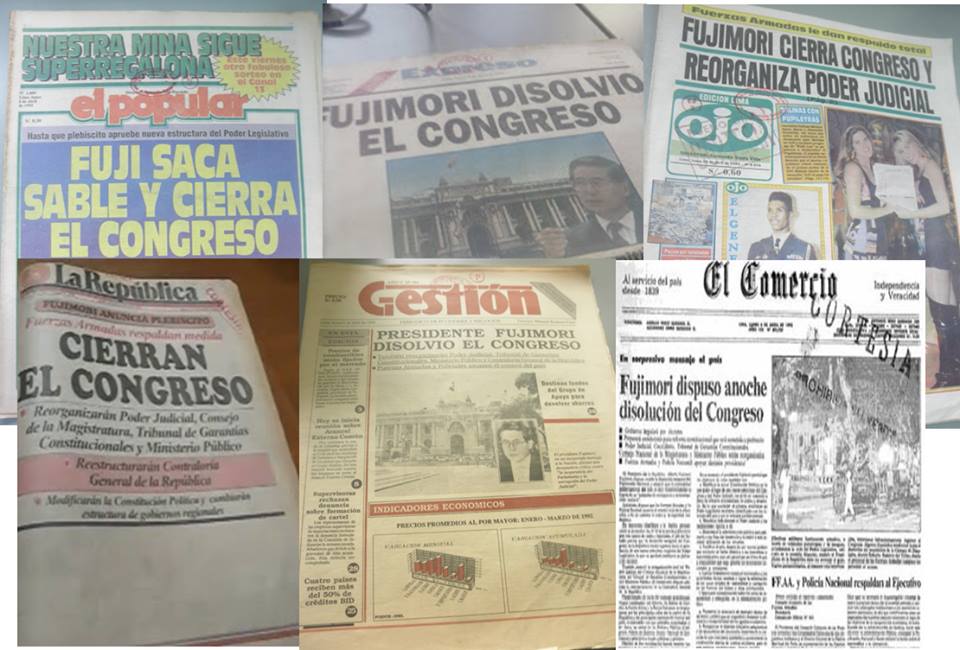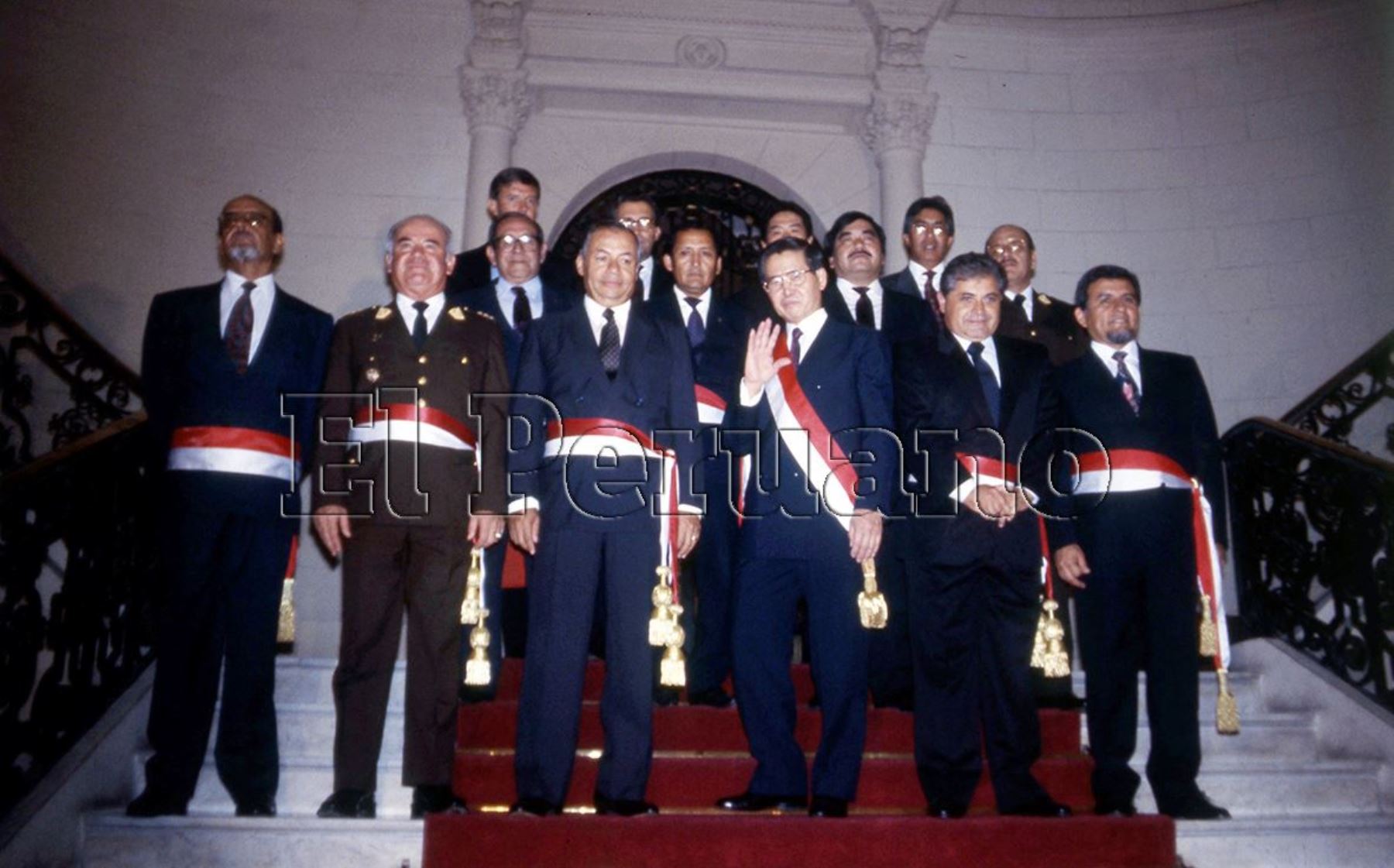
“... I have decided to take the following important steps. First, to temporarily dissolve the Congress of the Republic”, were the unexpected words left by former President Alberto Fujimori in his message to the nation on April 5, 1992. That night, the whole country was paralyzed by the attack on Peru's correct democratic order. In the midst of the demonstrations throughout the territory, which began with the stoppage of transporters, this 2022 marks the 30th anniversary of the speech given by the Fujimorist leader in an open signal and which put democracy in an agonizing state.
THE AUTOCOUP OF APRIL 5 - TIMELINE
This was a fact that marked the democratic history of Peru. The coup d'état took place on Sunday, April 5, 1992 and was supported by the Armed Forces in its entirety. This measure caused the current president to absorb all the power of the public institutions that govern correct order and justice in every corner of the country.
Why did he do it? According to his plan, these “justified changes” were part of “the organization of the judiciary, the Court of Constitutional Guarantees, the National Council of the Judiciary and the Public Prosecutor's Office”. The central objective was for these agencies to serve the pacification of the country and to eradicate the corruption prevailing in judicial instruments.

According to an IACHR action report, the authority sought to “prevent impunity for crimes perpetrated by terrorism, drug trafficking and organized crime.” In this timeline, Congress was dissolved on the basis that this institution created a commission to investigate the Barrios Altos massacre, perpetrated by Grupo Colina on 3 November 1991, an event that allegedly held Fujimori responsible.
Thirty years ago, the country became unstable due to a series of maneuvers that Fujimori exposed to the people to justify their actions. He indicated that Congress was obstructing laws that were required for the recovery of the economy and the fight against subversion. Without faces that defend the Judiciary and the Constitutional Court from their internal body, persecutions and transformations “in favor of democracy” began, according to the former president.
Although the expelled authorities tried to file the Amparo Appeals, they were rejected, being replaced by immediacy. Were rights violated in the 1992 auto-coup? Before the Inter-American Commission on Human Rights, the complainants pointed out that this was a violation of the rights guaranteed by the American Convention, specifically those that provide judicial guarantees, the principle of legality and retroactivity; protection of honor and dignity; political rights; equality before the law; and judicial protection.
¿HABLA EL PUEBLO?
48 hours after the incident, the results of a survey carried out by the pollster Apoyo were presented, which was carried out in Lima, where it was recorded that of the universe of respondents, 71% of citizens approved the dissolution of the National Congress and 89% were in favor of the restructuring of the judiciary.
THE MEDIA RESPONSE
Following the message to the nation of Fujimori, women and men of the press moved through the streets to be able to gather the first statements of the authorities about the radical decision taken by the president. They were removed from the surroundings to the Government Palace, preventing their passage and being attacked by law enforcement agencies.

In response to the violation of democratic acts in the national territory, the main media - far from the psychosocial media and the yellow press - presented a special edition in which they repudiated the events that were taking place in Peru. One of the most memorable covers is the one published by La República, in which he left the politics pages blank. The international newspapers expressed concern about the state of Peruvians with the measures taken by the alleged “reorganization of the entities that provide justice”.
Through the Armed Forces and Police, an attempt was made to stop the information circuit, since they wanted to prevent the country from knowing details of the self-coup. This was the powerful reason for radio stations, such as Antena 1, to be intervened and to see soldiers watching everyone who entered and left the buildings where the newsrooms were located.

SED DE PODER
When he came to the Naval Base as a witness to the trial against Vladimiro Montesinos, the dictator took a few seconds of interrogation to justify closing the Congress, stating that the parliamentarians on duty wanted to empty it.
Pride ahead. Although he was the man behind the unconstitutional act that affected democracy, Fujimori has never been sorry. For 2017, from the Barbadillo prison, he spoke on April 5 to leave a few words for the self-coup he starred in. This was the message he shared on his Twitter account: “To make omelettes you have to break eggs. Somebody had to do it. From prison I tell them: It was worth it.”
To end his scandalous rule, in 2000, Alberto Fujimori resigned from the presidency by fax when it was revealed that his personal advisor was buying the support of congressmen in exchange for large sums of money. This was just the beginning of the web of unscrupulous, criminal acts and attacks on the rights of Peruvians.

Más Noticias
Debanhi Escobar: they secured the motel where she was found lifeless in a cistern
Members of the Specialized Prosecutor's Office in Nuevo León secured the Nueva Castilla Motel as part of the investigations into the case

The oldest person in the world died at the age of 119
Kane Tanaka lived in Japan. She was born six months earlier than George Orwell, the same year that the Wright brothers first flew, and Marie Curie became the first woman to win a Nobel Prize

Macabre find in CDMX: they left a body bagged and tied in a taxi
The body was left in the back seats of the car. It was covered with black bags and tied with industrial tape
The eagles of America will face Manchester City in a duel of legends. Here are the details
The top Mexican football champion will play a match with Pep Guardiola's squad in the Lone Star Cup

Why is it good to bring dogs out to know the world when they are puppies
A so-called protection against the spread of diseases threatens the integral development of dogs

